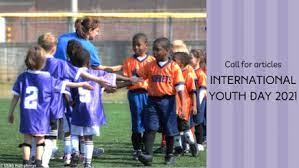
Call for articles: Youth engagement and leadership | sportanddev.org
The world has more young people today than ever. 2019 statistics by the UN estimated that nearly 1.2 billion people were between the ages of 15-24 years. By 2030, this number is expected to increase by 7%, to 1.3 billion. Almost 90% of young people live in developing countries, with almost 500 million residing in India and China. They are clearly the future.
While definitions of youth differ widely, more than half those aged 15-24 are unemployed. In the next decade, 1 billion young people are estimated to enter the labour market, and many face a future of irregular and informal employment.
These risks are worse for marginalised groups. Girls and young women are more likely to be unemployed, lack access to education, and be at a higher risk of exploitation and violence.
While many actors in the sport for development field seek to engage youth through their policies and programmes, they are often seen as beneficiaries and not meaningfully included in decision-making and leadership. This needs to change.
In the lead up to International Youth Day 2021 on 12 August, we are calling for articles on youth engagement and leadership in SDP. Some questions to consider are:
- How can sport be leveraged to address the specific challenges that young people face?
- How can youth be engaged in leadership roles in the sport for development sector, to determine policy agendas and influence change? What approaches can be used to engage youth in sport leadership roles?
- How can sport be used to build a more secure future for the youth, and build skills to prepare them for their entry into the labour market?
- In the context of COVID-19, how can sport help youth recover and rebuild from the pandemic, and build a stronger response to future disruptions?
- If you work with youth in the SDP sector, how has sport brought about a tangible change in their lives? What are some stories of real change?
- How can sport impact issues of gender and other inequalities in society? How can sport challenge gender norms and address violence against women and girls?
- In an increasingly digital world, what is the role of technology and sport in engaging with young people?
- How can sport be leveraged to address issues of violent extremism, social exclusion and unrest? How can young people use sport to tackle deep structural issues such as poverty, inequality and unemployment?
* Please note that young people may be those participating in programmes but may also be those delivering programmes (e.g. coaches and coordinators) and/or leading initiatives.
Though some definitions of 'youth' regard this as an category of people between the ages of 15-24, please feel free to consider an expanded definition of the term.
Contributors are free to explore other topics, as they would like.
We particularly invite contributions from youth themselves, people from the Global South and small states, those working on specific issues of gender, social inclusion and peace and security, those working with youth and other relevant stakeholders.
Send your submissions by 10 August 2021 to Tariqa Tandon at tandon@sad.ch. Articles should ideally be 500-800 words, though longer or shorter articles may be considered. If possible, you should also include a high-resolution image with copyright information.
Please also include a 1-2 sentence biography of the author(s) and links to any websites or social media profiles you would like associated with the post.
This call for articles is in partnership with The Commonwealth.










Add new comment